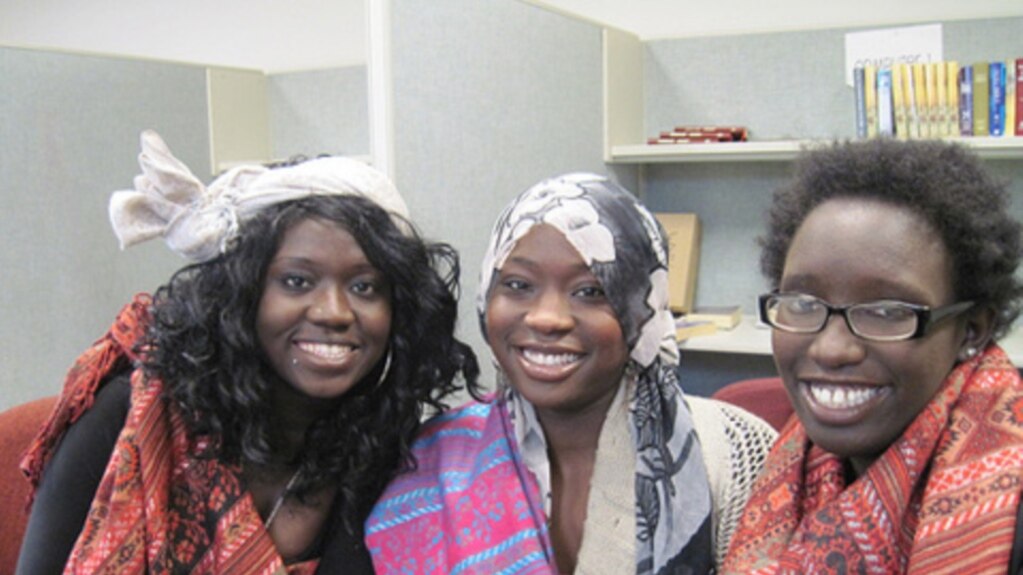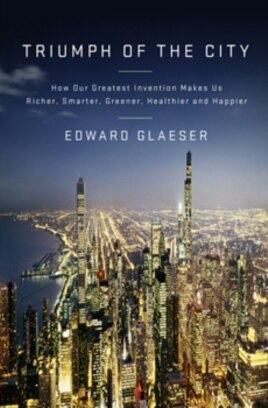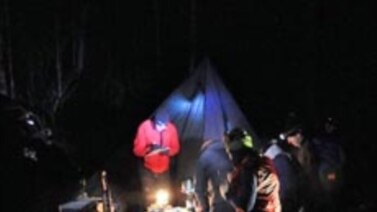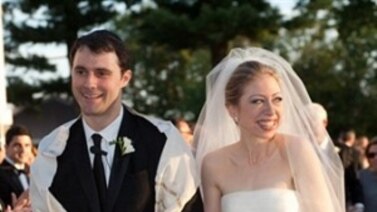
SHIRLEY GRIFFITH: Welcome to THIS IS AMERICA in VOA Special English. I'm Shirley Griffith.
STEVE EMBER: And I'm Steve Ember. This week on our program, we tell you why an economist has written a book in praise of cities. We also meet an outdoor survival expert -- he teaches people how to find wild plants that are safe to eat. And, later, we hear from a multicultural children's chorus with a message of peace.
(MUSIC)
SHIRLEY GRIFFITH: For economist Edward Glaeser, the best place to live is a city.
EDWARD GLAESER: "Cities are so fascinating because they play to mankind's greatest gift, which is our ability to learn from other people."
Since ancient times, he says, cities have given creative minds a place to work together to improve societies. But cities have not always gotten much thanks in return.
EDWARD GLAESER: "In the nineteen seventies, it looked as if globalization, new technologies and the death of distance was making our older cities obsolete. After all, the garment industry was fleeing New York. It looked like history itself was telling New York City to drop dead."
Yet since then, he says, globalization and new technologies have driven improvements in many cities. As a result, people are better able to profit from ideas.
EDWARD GLAESER: "What these new forces have done is they've increased the returns to new ideas, to being smart, because now if you got a new idea, you can manufacture it on the other side of the planet, you can take advantage of some new market opportunity in India, or Indonesia or Sub-Saharan Africa. These trends have also made cities more important because cities are at their heart today, engines of innovations, forgers of human capital."

Edward Glaeser has written a new book called "Triumph of the City." He takes readers on a world tour of what he considers urban success stories, from Boston, London and Tokyo to Bangalore and Kinshasa.
Mr. Glaeser is a professor at Harvard University. He himself lives outside the city of Boston.
Big cities can seem impersonal. They can be crowded, dirty and dangerous, but also places of pleasure and production. Mr. Glaeser says restaurants, supermarkets, theaters and museums all play a part in creating jobs.
EDWARD GLAESER: "If you look across the world, the countries where more than half of the people live in urban areas are more than four times richer on average than the countries where less than half of the people live in urban areas."
Mr. Glaeser says areas of poverty in cities are really a sign of the power of cities.
EDWARD GLAESER: "Cities don't make people poor, they attract poor people. And they attract poor people by delivering a path out of poverty and to prosperity, a chance to partner with people who have different skills, access to world markets, access to capital that enables poor people, some of them -- not all of them -- to actually find a way forward."
He says cities are also better for the environment.
EDWARD GLAESER: "There is significantly less carbon usage in cities. There are two reasons for that, one of which is less driving; they are more likely to use public transportation. And when they drive, they drive shorter distances. And the second is that people in the cities occupy smaller homes than people living in rural areas."
Not surprisingly, Professor Glaeser thinks even more people should move to cities. He says developing high-rise buildings, or "building up," is a way to avoid developing wider areas, or "building out."
STEVE EMBER: But architect and urban designer Michael Mehaffy says research suggests that the buildings do not have to be very tall.
MICHAEL MEHAFFY: "It might only require four, six, eight stories, something like that, to get very good urban densities and to have a very vital urban environment."
Mr. Mehaffy also says high-density living does not always improve quality of life.
MICHAEL MEHAFFY: "There is a point where more density doesn't really get you very much. I mean, they can be very helpful in some circumstances, they can be very destructive in some circumstances. I think we should really focus on what urban living gives to us in the network of relationships, not so much an abstract number like density and 'Let's just make it absolutely as high as possible and let's have tall buildings.' Because once you do that, you start to kick in a lot of negative effects from density."
Michael Mehaffy also points out that not everyone enjoys life in the big city.
MICHAEL MEHAFFY: "Not everybody kind of wants to live in a super high-density city. So I think people from different political persuasions, and all walks of life are getting more interested in more connected urban environments, and that isn't necessarily just big cities.”
In this world of seven billion people, a United Nations report says the population balance has tipped in favor of cities and away from rural areas. But it also says there is no easy answer to the question of what exactly a "city" is in twenty-eleven. "Governments and urban areas themselves define 'city' in numerous ways and their boundaries can shift, sometimes for political, demographic or economic reasons."
The U.N. Population Division calls Tokyo and other huge population centers "urban agglomerations." Under that definition, Tokyo is the world's largest urban area. Almost thirty-seven million people live there -- more than one-fourth of Japan's population. Delhi is second, with twenty-two million people, then Sao Paulo and Mumbai. Next are Mexico City; the New York-Newark, New Jersey, area; Shanghai; Kolkata; Dhaka and Karachi.
(MUSIC)
SHIRLEY GRIFFITH: Most Americans buy their food in supermarkets. But more and more people are looking for other sources of fresh produce, like farmers markets or their own gardens. Some people are even exploring the world of wild plants. Tim MacWelch is a forty-year-old expert in finding food in the wild. He started the Earth Connection School in nineteen ninety-seven. The business is located in Fauquier County, Virginia, southwest of Washington.
Mr. MacWelch offers classes to share his knowledge of how to find wild plants that can be eaten. Some classes have attracted more than twenty students. But on this day, there are just two, Bob and Tamae Heilen.
BOB HEILEN: "I'd like to be able to know that if there were an emergency and I couldn't get food in the store that I would be able to find food on my own, but also my wife and I, we like to learn new things."
TAMAE HEILEN: "Recently I started cooking wild plants like dandelions in our yard. And it tasted really good, and I decided, I want to study."
On Earth Connection's four-hectare property, the Heilens are learning about dandelions and other edible plants. Among them is yarrow, which looks a little like a fern.
TIM MacWELCH: "But ferns will not smell like this. Crush this and smell it. It's going to be like a culinary herb."
TAMAE HEILEN: "Smells really good."
Wild carrots are also on the tasting menu for the Heilens, but Mr. MacWelch warns that these can be difficult to identify. Wild carrots should look and smell like smaller, white versions of carrots sold in the market. Not only that, they should have tiny hairs on the stems.
TIM MACWELCH: "If there are no hairs on this and it smells bad, you're looking at a poison hemlock or a fool's parsley, both of which are deadly."
Tim MacWelch offers several different wilderness survival classes throughout the year. He also writes a blog on survival skills for the online magazine Outdoor Life.
(MUSIC)
STEVE EMBER: Pihcintu is a word in Passamaquoddy, a language spoken by an American Indian tribe in the northeastern state of Maine. It means "When she sings, her voice carries far." Pihcintu is also the name of a girls chorus in Portland, Maine.
When the girls in the Pihcintu Multicultural Children's Chorus sing about peace, the songs have special meaning for them. Many are refugees from Asia, Africa and the Middle East. Their families fled war, oppression and famine.
Their songs contain a message of hope. One song is called "Bells of Freedom."
(MUSIC)
"Bells of Freedom" was written by the chorus' director, Con Fullam, and one of its founding members, Judith Abdalla. Ms. Abdalla is eighteen. She was born in Sudan and lived in Egypt before coming to the United States.
JUDITH ABDALLA: "We're singing about peace, about coming together, about stopping the wars back in our native lands, and singing about being able to go back and being able to hold on to our languages and our families."
Another chorus member, Rita Achiro, was also born in Sudan. She was raised in a refugee camp in Kenya.
RITA ACHIRO: "For somebody to hear me sing and be like 'Wow,' it makes me feel good. But I also love having more than one person's voice. Singing as a group, it, like, sends a bigger message."
At any given time, the chorus has as many as thirty members from fourteen different countries, from Iraq to Cambodia. Choral director Con Fullam began recruiting singers from the local schools more than six years ago.
CON FULLAM: "Knowing that, for me, music has always been a very powerful healing thing, I thought it'd be a great idea to invite as many different refugee communities as possible."
Mr. Fullam says the chorus evolved into a girls' group when boys did not come to practice.
The group's performances might have limited to Maine if not for the involvement of Patrice Samara. Ms. Samara is a producer for Alphabet Kids, a company that sells multicultural children's books and CDs. A lawyer for the company suggested that she fly to Maine to check out the chorus. She liked what she heard. In October, Alphabet Kids released a Pihcintu CD.
Ms. Samara has begun to schedule performances outside of Maine. The first took place in August in Washington. She hopes the idea behind the chorus will lead to more such groups in other communities.
PATRICE SAMARA: "Many, many towns have immigrants, so we're hoping that this model will be embraced around the country."
(MUSIC)
SHIRLEY GRIFFITH: Our program was written and produced by Brianna Blake, with reporting by Faiza Elmasry, Josie Huang and Susan Logue. I'm Shirley Griffith.
STEVE EMBER: And I'm Steve Ember. English learners can read, listen and learn with our programs and new activities at voaspecialenglish.com. You can also watch a video about Tim MacWelch's wild edibles class. And you can join us on Facebook, Twitter and YouTube at VOA Learning English. Join us again next week for THIS IS AMERICA in VOA Special English.



